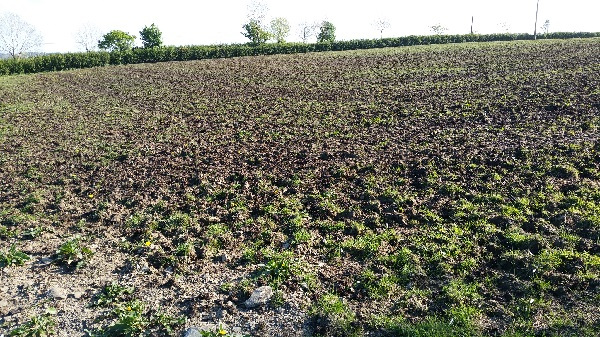The Year Moves On
Lots of neighbours are on the silage now. The pattern of farming is changing each year. Two of our neighbours have died and their land is let to another neighbour who has committed big time to dairying and built new sheds. So contractors are whizzing round the lanes in massive tractors taking the cut grass to the silage clamps. We have also let a few fields to him and they have been cut too. Our other main silage fields are let to Eirion who also has a lot of dairy cows and those fields will probably be cut this week. Both Ken and Eirion put their cows out through the summer months and strip graze them, but some other farmers keep their cows in all the year round. The cattle make a dreadful mess of the land if they are out in winter, especially in a wet year like the last one. One of our fields behind the house at Blaencwm was badly poached by our five horses this winter and took a long time to dry out. Eirion has applied a heavy dose of slurry and disc harrowed it, hoping it will come away OK, but really it needs re-seeding. The field took a hammering because we kept the horses out of the adjacent field that was re-seeded last year.

Here in Wales, under pressure to produce cheap milk, we have little choice in the farming system. The small family farm dairy units are no longer viable, and even the big ones are only marginal. My son Jamie left the family dairy farm near Llandyssul and now milks 320 cows in New Zealand and is taking on a second farm next door. The grass is growing pretty much all the year round there and the cows are out all the time on carefully managed swards. This cuts down shedding and forage costs tremendously and allows them to compete with us, even though they no longer have subsidies.
Our silage fields are mainly rye grass, forced into dark green rich growth with the use of fertilisers and slurry. Ecologically they are functionally dead. Anything attempting to live in them, from a beetle, to a skylark, to a hare, is shredded into the forage harvester in seconds and the field is left razed, bereft of all life. Kites and gulls clean up any body parts. This is repeated for three cuts throughout the summer, so the cull is remorseless. Even fifteen or twenty years ago we used to cut hay in June, but it was a chancy business, trying to find a window of dry weather for a whole week. Yesterday it was heavy sheeting showers of rain all day, but the tractors didn’t stop.
I watched at the top beaver pond two nights ago. It’s all drama there. The greylags have taken their goslings down to the lake but the moorhens have built their nest on a willow branch felled by the beavers into the water. Now they have hatched, but the parents lead them back onto the nest when it rains and at night time. She sits there with feathers fluffed out, covering all the chicks and pulling scraps of vegetation up around here like someone carefully tucking in a duvet. The other parent visits periodically with choice titbits and the one on the nest reaches down to receive it, then feeds it to a little fluffy black head with a bald red patch on it.
The water voles too enjoy the beaver pond and behave for all the world like mini-beavers. The vole hangs motionless, suspended in the water with dry fur, then dives under, leaving just a chain of bubbles. The beavers themselves must have kits now. The female is definitely lactating but they do not seem to be taking food into the burrow, so they must be new born last week. One of them was out at 1730 yesterday when I went past on the tractor. It was eating the tender blackberry leaves, so perhaps she is hungry being out so early.
I cannot see what the beavers are up to on the middle pond. They are both busy, but the area is too dark in the evening and too full of trees to see if they are breeding. I had a quick look at the pair on the lake and in 30 minutes both adults ferried three big sprays of willow into the lodge and left again. So the kits in there must be quite big and voracious by now. The hide is waiting for its roof but the weather has been against us, and I will make a door for it in the shed today if the rain continues. The moorhens under the log cabin have also hatched but still use the nest. If the weather picks up next week we will get a campfire going and have a party down there. We have several baby falcons being imprinted at the moment and they go everywhere we go. So we call it the Imprint Party. The young falcons are at a formative stage and have to get acquainted with everything, such as dogs, horses and tractors.
Nick